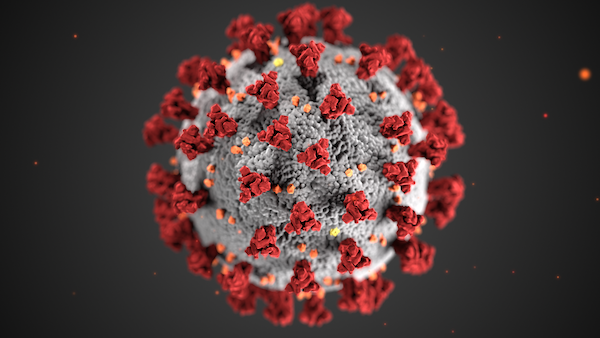QI Research Community Responds to COVID-19 Pandemic

As the novel coronavirus continues to spread, researchers with UC San Diego’s Qualcomm Institute (QI) and their partners in San Diego and around the world are bringing their broad range of expertise—along with cutting-edge technology—to the aid of patients and those working on the frontline to address this rapidly evolving public health crisis.
From exploring ways 3D printing technology and rapid prototyping techniques can be used to produce medical equipment and nasal swabs to developing a new noninvasive treatment for patients, our researchers are responding to the situation from many different angles using QI’s specialized facilities and cross-disciplinary research philosophy.
We are carefully following instructions from California’s governor and UC San Diego to apply staff limits (essential staff only), social distancing and sanitation requirements in our research settings. For COVID-19 information for the UC San Diego community, visit: coronavirus.ucsd.edu.
Technology-driven Research Solutions
Noninvasive Spleen Ultrasound Treatment for COVID-19 Patients
Based on established results that show stimulation of the vagus nerve, the longest cranial nerve in the body, can produce anti-inflammatory effects that can help prevent sepsis-related mortality, QI researchers are developing and testing a new Focused Ultrasound Stimulation to the Spleen, or FUSS, treatment for COVID-19. It engages the vagus cholinergic anti-inflammatory reflex to potentially aid the body’s response to the virus.
Leveraging 3D Printing and Nano Technologies to Produce Effective Medical Equipment and Gear
Researchers at QI’s Prototyping Lab are evaluating the use of 3D printing technology and other fabrication techniques to create safe and effective medical equipment and gear, such as ventilator components and face shields. Additionally, teams are exploring the possibility of using 3D printers to produce large quantities of the nasal swabs needed for COVID-19 testing.
Nanotechnology researchers are also evaluating the effectiveness of improvised medical masks using scanning electron microscope (SEM) technology available at Nano3, QI’s state-of-the-art nanofabrication cleanroom facility. Electron microscopes on site can image structures whose dimensions are much smaller than the novel coronavirus, providing researchers a means to accurately gauge the effectiveness of various personal protection equipment materials.
Folding SARS-CoV-2
The Pacific Research Platform, a National Science Foundation-supported project, has lent its distributed computing and storage powers to help in the fight against COVID-19. Within the last two weeks, more than half of the distributed system’s 600 GPUs have been made available to the global Folding@home effort to study the dynamics of how viral proteins interact with human receptors.
Earth 2.0 Brings a United Response to COVID-19
The COVID-19 pandemic presents a global threat never experienced in our modern times. Global infrastructure for healthcare and maintenance of critical supplies and resources are threatened. A new initiative at UC San Diego called Earth2.0 was founded for such times. The Earth2.0 / COVID-19 Collective Response System supports front-line clinicians and researchers who need help answering questions, performing tasks or locating resources in real-time, by engaging a local network of experts ranging from clinical researchers, to scientists, and engineers (faculty, staff and students) to help provide solutions.
QI’s Startup Community Efforts
Nanome, a company founded by UC San Diego alumni and that spent its earliest days in the Qualcomm Institute Innovation Space (QIIS), is providing researchers with a virtual reality platform to visualize and study the novel coronavirus. Nanome develops open-access virtual reality software that creates a shared virtual space for researchers to collaborate with one another and interact with 3D models of molecules. Currently, Nanome’s team is working with collaborators from around the world to use their virtual reality software to examine the protein structures that allow the novel coronavirus to attach to healthy cells.
Additionally, flashPub—a QIIS-incubated company on a mission to make scientific publishing smaller and faster—is organizing a global campaign of researchers to model outbreak scenarios at the city scale. The group will be rapidly publishing modeling results and organizing data into an interactive map. Their goal is to predict when a city is going to hit a tipping point of hospitalizations in order to inform preparation and resource allocation decisions.
Related Links
UC San Diego Coronavirus information
Media Contacts
Alicia Clarke
(858) 822-5825
amclarke@eng.ucsd.edu
